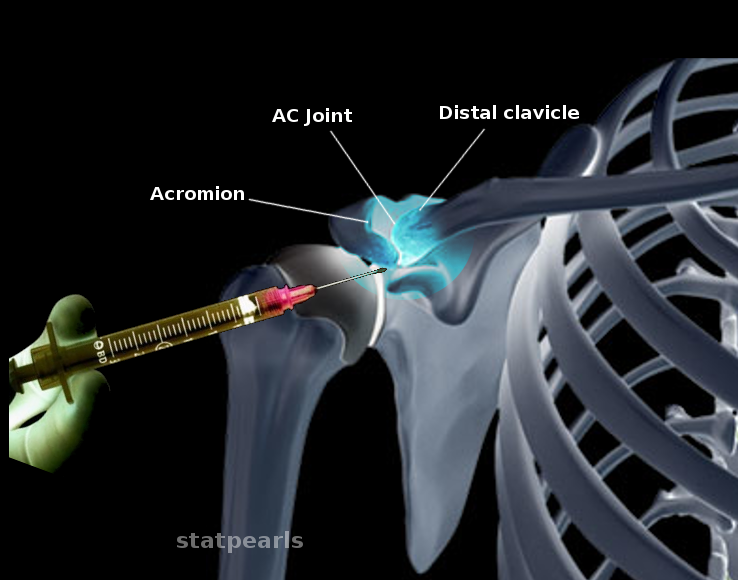[1]
van der Windt DA,Koes BW,de Jong BA,Bouter LM, Shoulder disorders in general practice: incidence, patient characteristics, and management. Annals of the rheumatic diseases. 1995 Dec;
[PubMed PMID: 8546527]
[2]
Saccomanno MF,DE Ieso C,Milano G, Acromioclavicular joint instability: anatomy, biomechanics and evaluation. Joints. 2014 Apr-Jun;
[PubMed PMID: 25606549]
[3]
Monica J,Vredenburgh Z,Korsh J,Gatt C, Acute Shoulder Injuries in Adults. American family physician. 2016 Jul 15;
[PubMed PMID: 27419328]
[4]
Walton J,Mahajan S,Paxinos A,Marshall J,Bryant C,Shnier R,Quinn R,Murrell GA, Diagnostic values of tests for acromioclavicular joint pain. The Journal of bone and joint surgery. American volume. 2004 Apr;
[PubMed PMID: 15069148]
[6]
Chang KV,Mezian K,Na?ka O,Wu WT,Lin CP,�z�akar L, Ultrasound-guided interventions for painful shoulder: from anatomy to evidence. Journal of pain research. 2018;
[PubMed PMID: 30349357]
[7]
DeFroda SF,Nacca C,Waryasz GR,Owens BD, Diagnosis and Management of Distal Clavicle Osteolysis. Orthopedics. 2017 Mar 1;
[PubMed PMID: 27925640]
[8]
Gultekin S,Chaker Jomaa M,Jenkin R,Orchard JW, Use and Outcome of Local Anesthetic Painkilling Injections in Athletes: A Systematic Review. Clinical journal of sport medicine : official journal of the Canadian Academy of Sport Medicine. 2019 Feb 13
[PubMed PMID: 30789366]
Level 1 (high-level) evidence
[10]
Javed S,Sadozai Z,Javed A,Din A,Schmitgen G, Should all acromioclavicular joint injections be performed under image guidance? Journal of orthopaedic surgery (Hong Kong). 2017 Sep-Dec;
[PubMed PMID: 28933229]
[11]
Chaudhury S,Bavan L,Rupani N,Mouyis K,Kulkarni R,Rangan A,Rees J, Managing acromio-clavicular joint pain: a scoping review. Shoulder
[PubMed PMID: 29276532]
Level 2 (mid-level) evidence
[12]
McAlindon TE,LaValley MP,Harvey WF,Price LL,Driban JB,Zhang M,Ward RJ, Effect of Intra-articular Triamcinolone vs Saline on Knee Cartilage Volume and Pain in Patients With Knee Osteoarthritis: A Randomized Clinical Trial. JAMA. 2017 May 16;
[PubMed PMID: 28510679]
Level 1 (high-level) evidence

